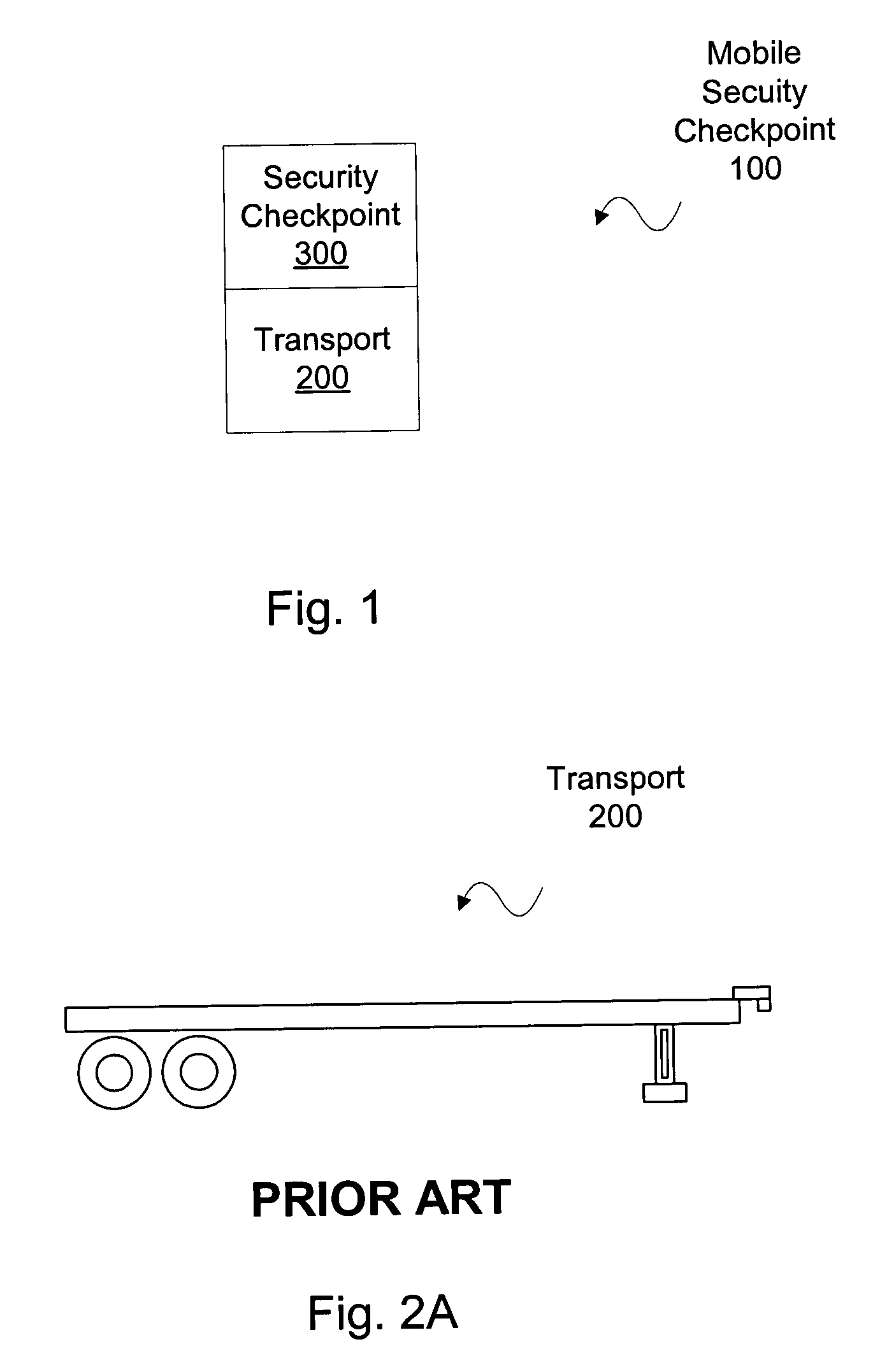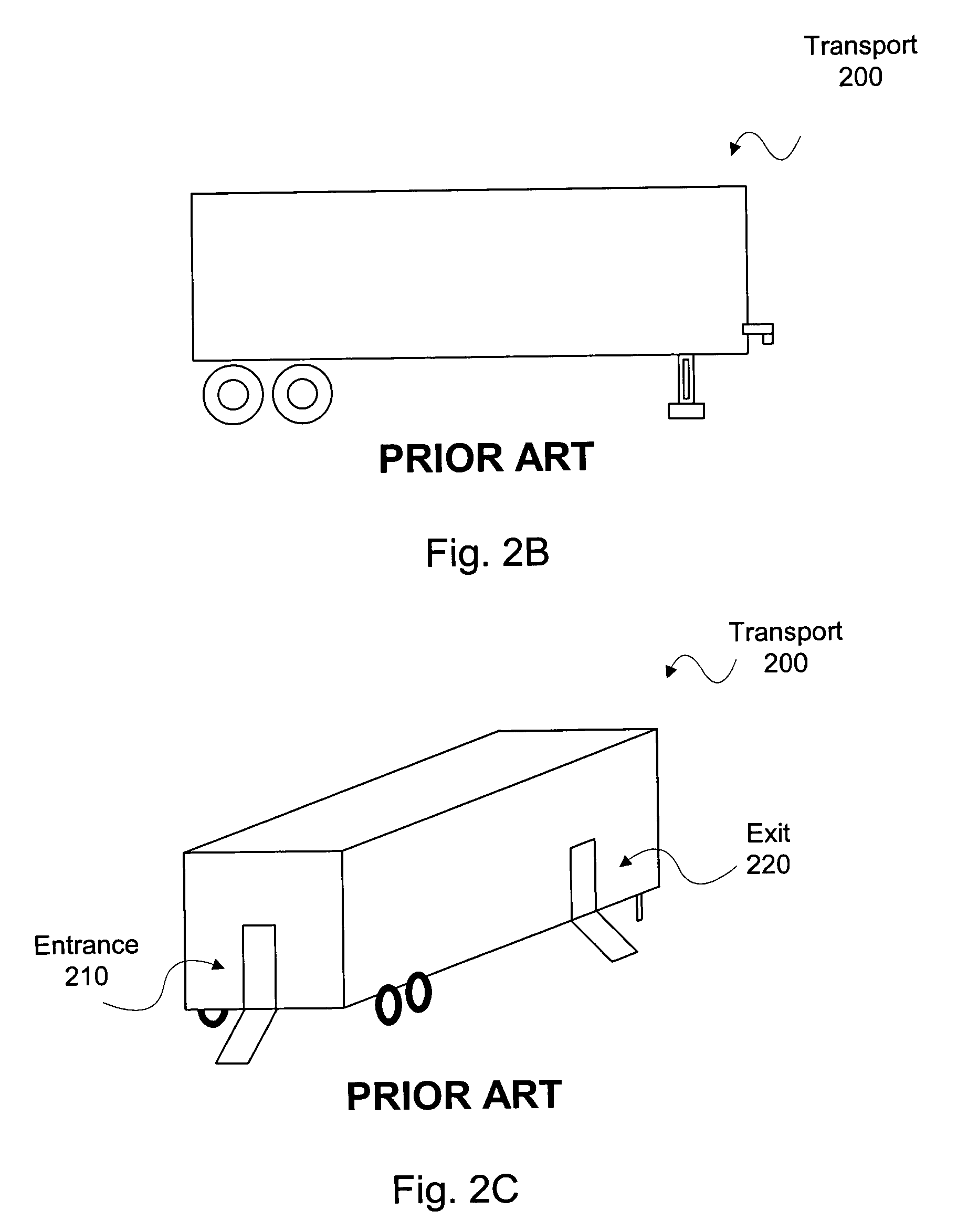Mobile security unit
a security unit and mobile technology, applied in the field of mobile security checkpoint configuration, can solve the problems of inconvenience for the public, loss of privacy, and high cost of security checkpoint construction and staff, and achieve the effect of improving the throughput of the checkpoint, reducing the frequency of closing, and increasing the passenger throughput through the checkpoin
- Summary
- Abstract
- Description
- Claims
- Application Information
AI Technical Summary
Benefits of technology
Problems solved by technology
Method used
Image
Examples
Embodiment Construction
[0028]A mobile security unit (MSU) 100 having a transport 200 configured to move a security checkpoint 300, as schematically depicted in FIG. 1. The MSU 100 may then be moved as needed to meet security demand or to store the security checkpoint, as described above. Specifically, one or more of the MSUs 100 may be moved to a location having a temporary security demand and removed after the demand abates. The MSU 100 may then be placed into storage during a period of inactivity. In this way, delicate screening equipment on the MSU 100 may be protected during periods of inactivity. Alternatively, the MSU 100 may be repositioned to another location of greater security demand. In this way, the security checkpoint assets may be distributed between different locations in an efficient manner. Similarly, the costs for security may be shared between different locations.
[0029]Referring now to FIGS. 2A and 2B, the transport 200 may be some type movable structure for carrying the security screen...
PUM
 Login to View More
Login to View More Abstract
Description
Claims
Application Information
 Login to View More
Login to View More - R&D
- Intellectual Property
- Life Sciences
- Materials
- Tech Scout
- Unparalleled Data Quality
- Higher Quality Content
- 60% Fewer Hallucinations
Browse by: Latest US Patents, China's latest patents, Technical Efficacy Thesaurus, Application Domain, Technology Topic, Popular Technical Reports.
© 2025 PatSnap. All rights reserved.Legal|Privacy policy|Modern Slavery Act Transparency Statement|Sitemap|About US| Contact US: help@patsnap.com



